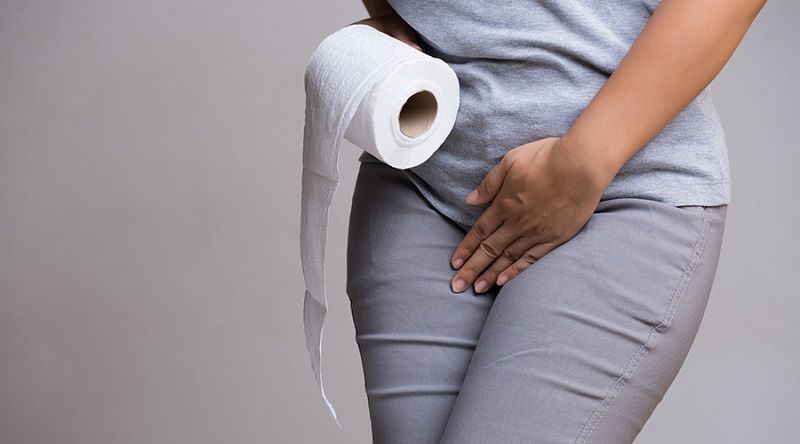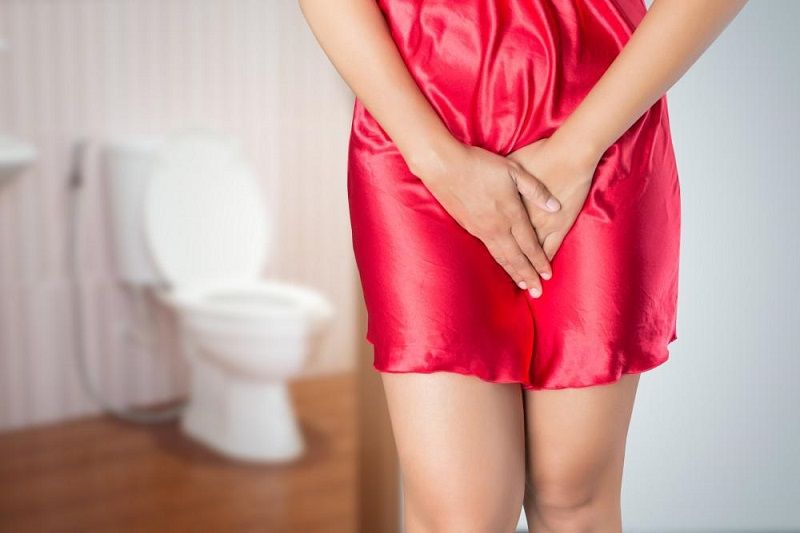Does a little pee holding you back?
Well, this problem would arise only when you leak a little urine and that makes you wet. This can happen when you lose control over your bladder.
The problem is known as Urinary Incontinence (UI).
In some cases of UI, you empty your bladder completely and in some cases, you experience only minor leakage.
However, the condition may be chronic or temporary, depends upon root.
According to the Urology Care Foundation, millions of adults in the United States experience UI. According to Johns Hopkins Medicine, it’s pretty common among women over 50.
But the problem is not limited only to women; it can happen to men as well. Urinary Incontinence in Men is as general as in women.
As you age, the muscle that supports your bladder tends to weaken and this is something that leads to UI.
The result would be either leaking or uncontrolled urination and the problem can happen with at least 1 out of 10 people.
UI can range from mild, occasional leaking to chronic uncontrolled urination. This problem is not a disease but a symptom of an underlying medical condition.
So, let’s dive deep to know more about this urine leakage problem….
What Is Urinary Incontinence?

Urinary Incontinence is the passing of urine unintentionally. The problem arises when you lose control of your bladder. This is a very common problem among men and women.
Millions of people around the world are facing this problem.
At different ages, men and women have different risks of developing Urinary Incontinence (UI). In childhood, girls usually develop bladder control at an early age than boys.
This is exactly why bedwetting or nocturnal enuresis is less common in girls than in boys.
But, the case is completely reverse when you compare adult men and women. This happens because of anatomical differences and changes that happen after pregnancy and childbirth.
Nevertheless, Urinary Incontinence in Men is likely to happen.
The prevalence of UI increases with age but this is not an inevitable part of aging. The problem is completely remediable. However, you need to consult a urologist to find the root problem.
Here are the symptoms and different types of UI that can happen.
Urinary Incontinence Symptoms and Types
Urinary Incontinence Symptoms would tell you what kind of urinary incontinence problem you’re having.
The primary symptom most people experience is an involuntary release of urine.
However, not all the incontinence problem last-longer. Some of the causes of incontinence are temporary and don’t last long.
So, once the cause goes away the incontinence problem finishes.
Temporary urinary incontinence can happen due to vaginal infection. Irritation, medications, constipation, and restricted mobility can be the reason for it.
However, urinary tract infections are a common cause of temporary incontinence and addresses as they happen.
When this happens the majority of people experience occasional and minor leaks of urine. Others may lose small to moderate amounts of urine more often.
This problem is generally categorized into three types. However, it’s possible that you can experience more than one type at the very same time.
Urinary Incontinence Types
#1: Stress Incontinence
Urine in this particular type leaks due to weak pelvic floor muscle and tissues. And the same can happen when the pressure on your bladder increases such as when you jump, cough, or laugh.
In this case, you don’t feel the urge to urinate.
Pregnancy and childbirth can stretch and weakens a woman’s pelvic floor muscles.
Stress incontinence can also happen because of things that can lead to stress such as overweight, obesity, or prostate surgery.
#2: Urge Incontinence
This type is also known as overactive bladder. In this case, you’ll feel a strong urge to urinate even when your bladder isn’t full.
When you have overactive bladder your bladder won’t be able to halt urine and make you feel urgency urinating.
Overactive bladder can happen because of diabetes, stroke, or multiple sclerosis.
This can cause damage to the brain, the spine, or the nerves extending from the spine to the bladder.
#3: Overflow Incontinence
In this type, your bladder never gets empty and you experience urine leakage without feeling a need to go to the bathroom.
This generally happens when something stops urine to come out of the bladder.
In this case, prostate enlargement partially closes off the urethra and the bladder becomes underactive. The problem can occur due to diabetes or cardiovascular disease.
This can lead to numerous infections and other problems.
#4: Functional Incontinence
In functional incontinence, your urinary tract functions correctly but other illness or disabilities prevent you from staying dry.
This can occur if you have mental or physical disabilities. If you have dementia or arthritis, these causes can prevent you from getting to the bathroom in time.
#5: Mixed Incontinence
This type is a combination of both overactive bladder and stress incontinence. In this case, you’ll feel stress and urge to urinate.
This case can occur in men when they have had prostate removal or surgery for an enlarged prostate. And this can happen in men or women of older age as well.
#6: Reflex Incontinence
This type of incontinence occurs when the bladder muscle contracts and urine leaks (frequently in large amounts) with no urge.
This can happen due to the nerves that warn the brain when the bladder is filling.
The problem occurs in people with serious neurological impairment from sclerosis, spinal cord injury, or other injuries.
Generally, people with disabilities get this problem.
And the causes of happening this problem are numerous…some of them are normal while others are severe.
Urinary Incontinence Causes
There are numerous causes through that UI can happen.
Some of the examples the causes Urinary incontinence are:
- Weak bladder muscle or overactive bladder muscle
- Physical damage to your pelvic floor muscle
- Damage to nerves that control the bladder from diseases
- Blockage from an enlarged prostate in men
Some of these conditions are easily treatable and only cause temporary urinary problems. While other causes are more persistent and severe.
-
Aging
As you age, your muscle becomes weak and loses its support to the bladder. This is exactly what surge risk of urinary incontinence.
If you want to maintain a strong muscle and healthy bladder, you gotta practice healthy lifestyle habits.
The healthier you are, the better your chances to avoid incontinence in your older age.
-
Damage
The pelvic floor muscle supports your bladder. And any damage to this increases the chances of urinary incontinence. This generally happens due to specific surgery- a hysterectomy.
The problem can also arise because of pregnancy or childbirth.
-
Enlarged Prostate
If you’re male, your prostate gland surrounds the neck of your bladder. The gland is responsible for protecting and nourishing your sperm. And this increases with age.
This is common in men that result in incontinence.
-
Cancer
Prostate or bladder cancer can cause urinary incontinence. In some cases, treatment for cancer can also make harder for you to control the bladder.
Benign tumors can also cause urinary incontinence by blocking the flow of urine.
Some lifestyle factors are also responsible for causing temporary incontinence.
If you drink too much alcohol or caffeinated beverages chances are high you’ll temporarily lose your bladder.
If there is a problem there is a solution too. And below are the solutions that you can try to get rid of urinary incontinence.
Urinary Incontinence Treatment
Urinary Incontinence Diagnosis is not pretty tough. The more difficult part is to determine the type and cause of incontinence which requires several exams and tests.
However, changes in lifestyle and treatments can help you with symptoms.
Today, there are numerous treatments available for urinary incontinence than ever before.
And the diagnosis of this problem depends upon the bladder control problem you have.
It also depends on the seriousness of the bladder problem and your lifestyle.
However, one should go for the simplest and safest urinary incontinence medication or treatment available.
Bladder control training can also help you get better control over your bladder.
Here are some treatments that can help you have control over your bladder.
- Pelvic Floor Exercises (Also known as Kegel exercise): This exercise can help you strengthen your pelvic muscle after childbirth. The exercise work on the muscle you use to stop urinating. The exercise makes your muscles strong enough and helps you hold urine in your bladder for longer.
- Biofeedback: A probe is inserted to monitor the squeeze of your bladder. This will help you regain control over the muscles in your bladder and urethra. Biofeedback can be more helpful when you use it in a combination with Kegel exercises.
- Pessary: Pessary- doctors recommended device that needs to be inserted into the vagina. This device repositions the urethra o help reduce leakage.
- Timed Voiding and Bladder Training: This may help you control your bladder. In this treatment, the first thing you should make is a chart of the times you pee and the times you leak. You can observe the pattern carefully and then plan to empty your bladder before an accident takes place.
You can also train your bladder t gradually increase the time between bathroom visits. The combination of kegel exercise and biofeedback with this training would give you a better result.
- Lifestyle Changes: The changes you do in your lifestyle can help you get rid of urinary incontinence. Such as weight loss, quitting smoking and alcohol, drinking fewer caffeine products help with incontinence.
Choosing water over other drinks and limiting drinks before bedtime would also be beneficial.
- Medication: There are several Urinary Incontinence Medication over the Counter available to treat the enlarged prostate problem.
However, for Urinary Incontinence Treatment for Elderly, you should consult your doctor before going for any treatment.
You should not embarrass yourself to talk to your doctor because it’s worth it.
They can let you know the cause of the problem and suggest treatment accordingly.
The Bottom Line
In this blog, you would have found almost everything you were looking to know about urinary incontinence. The problem is not so serious that it won’t be treatable.
However, you should not avoid the problem and go for the treatment as early as UI happens.
This is not always possible to prevent urinary incontinence but there are steps that will reduce the chance of developing.
Some such steps are:
- Controlling your weight
- Avoiding or cutting down alcohol
- Quitting smoking
- Keeping fit- Making sure your pelvic floor muscle are strong enough
So, if you take some precaution then it’d be the safest thing you can do to control your bladder.
If you find this article informative do let us in the comment section below.

